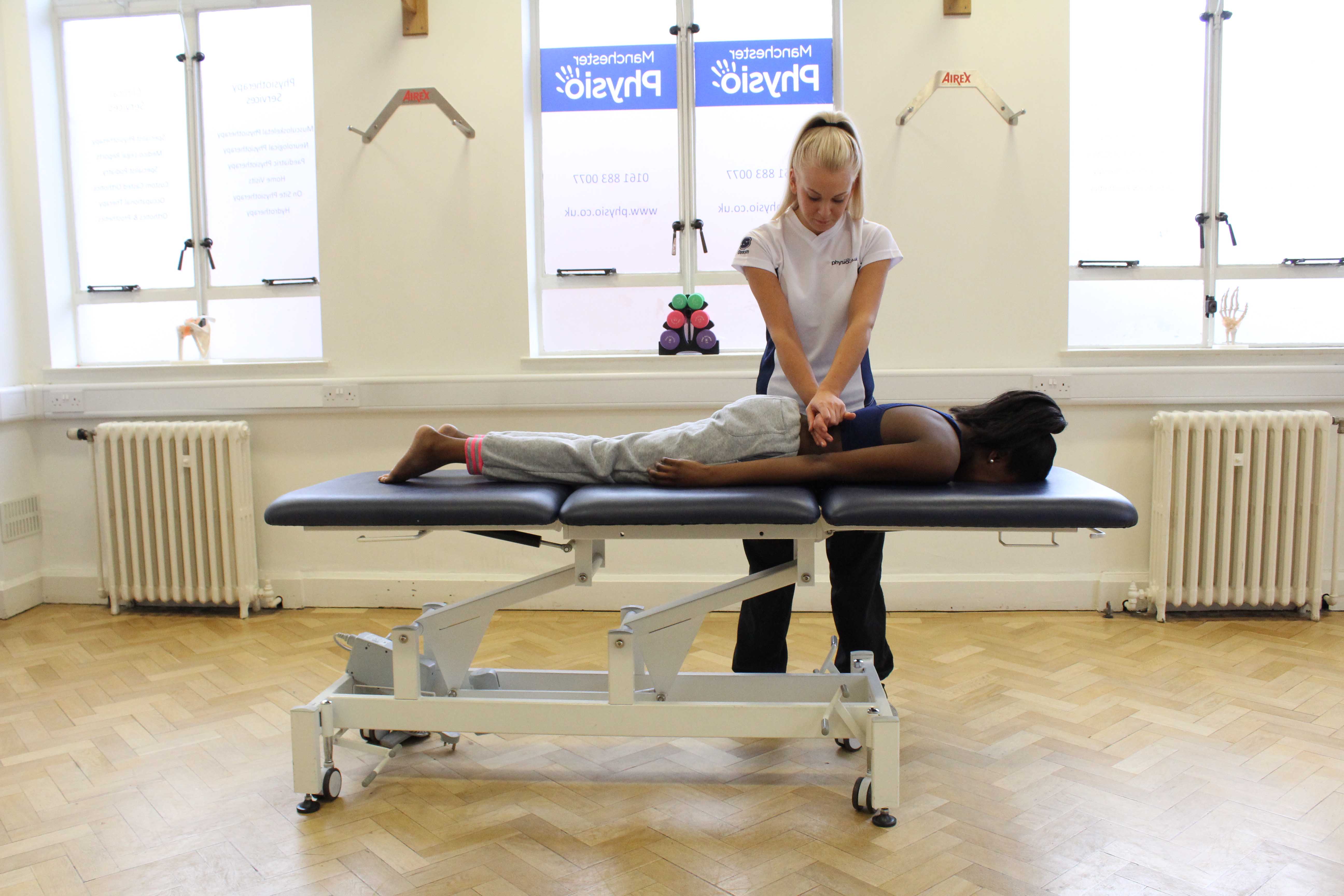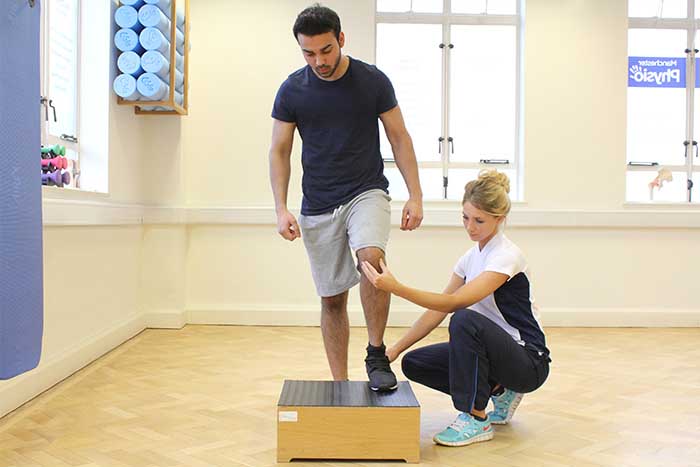Massage can be used to benefit children in a number of ways which can assist in improving the quality of life and overall health and wellbeing. During childhood, a number of vast musculoskeletal changes occur especially between the ages of 8 to 16. Musculoskeletal changes can cause pain, reduced flexibility and increase their chance of injury. Massage therapy can target common symptoms associated with musculoskeletal changes such as pain and reduced flexibility to enable children to perform pain free physical activity from childhood to adolescence.
What is massage for children?
Massage can be used to benefit children in a number of ways which can assist in improving the quality of life and overall health and wellbeing. During childhood, a number of vast musculoskeletal changes occur especially between the ages of 8 to 16. Musculoskeletal changes can cause pain, reduced flexibility and increase their chance of injury. Massage therapy can target common symptoms associated with musculoskeletal changes such as pain and reduced flexibility to enable children to perform pain free physical activity from childhood to adolescence.

When can massage help children?
Massage treatment can use a range of techniques which vary in stroke depth, speed, direction and rhythm. Specific strokes will be used to achieve the goal of the treatment and enable the patient to experience the best results. Massage can be applied at any time during childhood but is especially beneficial during the ages of 8 to 16 where they may be experiencing growth spurts. When experiencing a growth spurt the child's bones will be lengthening at a greater rate than the surrounding soft tissues can such as muscles. Bone spurts can leave muscles in a state of constant tension, this is most apparent in the quadriceps and calf muscles. Massage therapy to tight muscles can result in a reduction in tension and pain.
 Above: Massage can help settle muscular aches and pains in children.
Above: Massage can help settle muscular aches and pains in children.When can massage help children?
Massage therapy can help children cope with the stresses of growing and physical activity. Massage treatment can be especially beneficial when applied during the presence of:
Massage can be used to treat tight muscles. Tightness within muscles occurs following strenuous physical activity due to microscopic tears within the muscles. When microscopic tears occur, collagen fibres are laid down in a disorganised fashion. The disorganised fashion of collagen fibres results in the tissue becoming tight and painful. Massage can realign the collagen fibres into a functional fashion which allows for a reduction in tension, pain and improvements in range of movement and flexibility.
Massage treatment can be used to treat acute pain. Acute pain refers to pain lasting up to 6 months. Acute pain can present as a dull ache, sharp or shooting pain and can be the result of injury, overuse or surgery. Massage can decrease the presence of acute pain by increasing the temperature of the tissue, increasing capillarisation and increasing the release of the body's natural endorphins.
The application of massage can be used to treat chronic pain. Chronic pain refers to pain lasting longer than 6 months. Chronic pain can present as a muscular ache or sharp pain. Chronic pain can occur for a number of reasons, the most common being a post injury that has failed to heal or a long term condition. Massage can reduce chronic pain by increasing tissue temperature, removing waste products and increasing the release of endorphins. Massage can also decrease chronic pain through the pain gate theory. The pain gate theory states signals of pain sent from injury sites can be blocked by signals of massage on their passage up to the brain. A reduction in chronic pain can leave the individual feeling relieved with a reduction in pain and improvement in movement.
What are the physiological effects of a massage for children?
Massage treatment can produce a number of benefits through producing and stimulating a number of physiological effects such as:
Massage treatment can increase vasodilation. Vasodilation occurs when the smooth muscles surrounding the blood vessels relax, allowing the vessels to widen. Vasodilation can be observed visually through a pink colouration of the skin, which shows high blood circulation is present. Vasodilation allows for a decrease in blood pressure and an increase in blood circulation. Massage can stimulate the release of histamine, a hormone involved in increasing the permeability of blood vessels, the more permeable the greater the blood circulation.
Massage can increase the temperature of tissues. An increase in temperature is achieved through the friction energy generated between the therapist's hands and the patient's body during the application of massage strokes. Massage can also stimulates an increase in blood circulation through the process of vasodilation. An increase in tissue temperature allows tissues such as muscles, fascia, ligament and tendons to relax and increase in flexibility, elasticity and pliability.
Massage can aid the removal of waste products. The accumulation of waste products is common when taking part in regular activity. If left untreated excess waste products within the tissue can cause pain and limit functional performance. The application of massage can help remove waste products through assisting the lymphatic system. The lymphatic system is made up of lymph vessels and lymph nodes. Massage stimulates lymph vessels to remove waste products from tissues and transport it into the blood stream to be expelled from the body via lymph nodes. The removal of waste products will result in a reduction in pain and an improvement in functional performance and tissue health.
Massage can increase tissue elasticity. Tissue elasticity refers to the tissues ability to elongate under stress. If a tissue has low elasticity the risk of injury is heightened. Massage can increase the elasticity of tissues by increasing blood circulation. An increase in blood circulation is achieved through the process of vasodilation, the widening of blood vessels which allows high volumes of blood circulation to access the tissue. An increase in blood circulation can increase tissue temperature and the volume of oxygen and nutrients entering the tissue, therefore an increase in elasticity is observed.

What are the benefits of a massage for children?
Massage therapy can decrease muscular tension. As explained above when children experience growth spurts, their bones usually lengthen prior to their muscles. During growth spurts the child's muscles are left in a constant state of tension which may be painful. Massage techniques involving long and slow strokes can help stretch the muscles through the application of longitudinal strokes. Massage can help elongate the muscle and allow it to rest without tension alongside the growing bone.
Massage treatment can decrease pain. Pain reduction is achieved through the pain gate theory, an increase in tissue temperature and the removal of waste. The pain gate theory states when a painful stimulus is present C nerve fibres are stimulated to send an impulse to the brain. When massage is applied, alternate nerve fibres are also stimulated to send an impulse to the brain, however this second impulse can block the passage of the C nerve fibre. The blockage of C nerve fibres means the impulse sent from the painful stimulus doesn"t reach the brain and pain is reduced. Pain can be reduced by increasing the temperature of tissues, this warming sensation is achieved by stimulating vasodilation which causes an increase in blood circulation. Massage can reduce pain by assisting in the removal of waste products from the muscles which allows the muscles to improve in performance and function.
Massage can be used to maintain healthy muscles by ensuring the muscles have a good supply of nutrients and an efficient repair system. The stroking motions involved in a massage can stimulate vasodilation, a process where blood vessels widen allowing a greater blood supply to flow. Vasodilation increase in chance for blood vessels carrying oxygen and nutrients to enter the soft tissues. Vasodilation can enhance the body's natural repair system by ensuring a great number of machrophages, mast cells and fibroblasts (cells essential in the repair process) contact damaged tissues.
Massage can also boost the child's immune system. The lymphatic system which consists of multiple lymph nodes and vessels makes up an important part of a child's immune system. The purpose of the lymphatic system is to remove waste products, bacteria and viruses from the body's cells and transport them to a lymph node where they can be expelled from the body. If the lymphatic system begins to work inefficiently the chance of ill health occurring is common. Massage therapy, in particular lymphatic drainage techniques can prevent the lymphatic system being overrun by assisting in the removal of bacteria, viruses and waste products through specific directional strokes.
Summary
Overall, massage therapy can be extremely beneficial to children during the ages of 8 to 16 due to the presence of growth spurts. Growth spurts are common during this period of a child's life and can result in increased muscular tension and pain. Massage therapy when applied during a range of circumstances such as acute pain, chronic pain and tight muscles can be extremely beneficial. The benefits of massage include a decrease in tension, decrease in pain, maintain healthy muscles and a boost in the immune system. The benefits of massage are achieved through a number of physiological effects produce from the massage such as increased vasodilation, temperature and tissue elasticity and the removal of waste products.
How can I arrange a massage to help children?
To arrange a massage to help children at Physio.co.uk, email us at office@physio.co.uk or call us on 0161 883 0077.
You can also book an appointment online and save £10.

 0330 088 7800
0330 088 7800



































